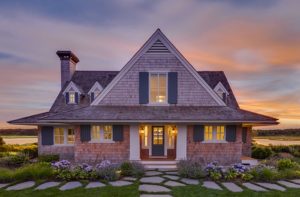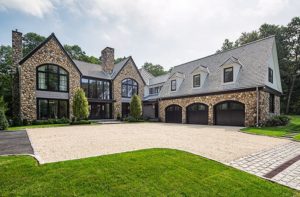Why A Lighting Plan is Key, According to an Expert
April 13, 2021
Sponsored Content
Text by Kristin Amico
Homeowners are working, playing, and relaxing under the same roof, and the ambiance of each space has taken on increased importance. The ideal lighting adds a sense of luxury and provides the right light level for each room, regardless of season or availability of natural light. But there’s more to lighting than flipping a switch.
“There’s a big difference between lighting and light. The first is about the fixtures, the latter is about the amount of illumination. The most successful designs achieve the right balance between the two,” explains Jeff Pomeroy, president of Light New England, a lighting agency that has a sister showroom, Light Room, both in Boston. He shares his tips on the best lighting for style, comfort, and functionality.
Use Lighting to Dial-Up Design
Pomeroy is a lighting advocate on a mission to extend the fundamental elements of design, including balance, proportion, scale, and harmony, to the art of lighting.
What he recommends:
“Mix it up. Combining a variety of lighting fixtures with the right type of bulb brings a look together and enhances the other design elements in a room,” Pomeroy notes.
A space with layered lighting that includes multiple light sources shining at different angles will have more impact versus one or two flat sources of lighting, such as using recessed lights exclusively for illumination. You may have a chandelier over your table or in the room’s center as a standard application. But you could enhance existing artwork by adding art lighting for dramatic effect.
“Don’t be afraid to invest in quality lighting products that add visual drama and dimension in a room—it will ultimately create a beautiful and balanced space,” Pomeroy advises.
Use Light To Enhance the Mood of Any Room
“What is the best way to light a home?” This, Pomeroy notes, is the question he’s been asked the most over his thirty-plus year career. His answer? “Use lighting to support the way that you live in your home.”
What he recommends:
Let lighting help set the mood. Opt for diffused lighting in the bedroom or other areas where you want to foster a sense of tranquility and relaxation. Alternatively, brightness in an office will inspire a more productive environment, and a media room benefits from dimmers that help you sink into the couch, propelling you into a movie theater experience.
For optimal results, first, consider the natural light of the space and then enhance it with artificial light to complete the look.
Focus Light Where It’s Needed Most
This is especially important in rooms like the kitchen, craft room, or reading nook where functional light is equally as important as mood light. But, Pomeroy cautions, “avoid flooding an entire room with intense light. More isn’t always better.”
What he recommends: Bring focus to the areas that matter with task lighting. In the kitchen, the right light above an island or countertop is key. In addition, undercabinet and recessed lighting puts focus on the most frequently used spaces, while offering layers of light that add depth and softness.
In a den or reading spot, wall sconces or recessed lights makes it much easier to read while also enhancing the mood or “glow” of a room.
Embrace LED Lighting
LEDs are an energy-efficient source of light, but there is still some confusion about how to best use the bulbs in an overall design scheme.
What he recommends: Know the importance of color temperature and color rendering when selecting your source. Color temperature measures how the color of a bulb appears. Color rendering determines the ability of the source to show the actual color of the object you’re lighting.
“LED lights are often misunderstood. The bulbs are much higher quality than when they were first introduced and now offer more consistent light and dimming capability,” explains Pomeroy.
Because the bulbs remain cool to the touch, designers have more flexibility to experiment with sleeker, modern fixtures. That’s thanks to new LED technology that makes it possible for bulbs to be confined in small spaces without overheating. For instance, LED’s can light up a natural stone like alabaster that an incandescent never could.
Make Lighting an Integral Piece of the Design Plan
“A lighting plan created jointly between a designer and lighting professional can mitigate issues that arise at the last minute,” says Pomeroy.
Designers and architects work hand in hand with clients to create spaces that fulfill a homeowner’s vision, but lighting is often low on the list of priorities, and not an element that homeowners can visualize as easily as paint color or cabinet style.
What he recommends: Talk to your designer about partnering with a lighting professional. Every space captures light differently, and designers often need to be on-the-spot, creative problem solvers. Pomeroy wants to work in partnership with designers to help address these challenges before they become headaches.
Over the years he’s worked on solutions for everything from common lighting challenges to creative methods for achieving luminous layers of light—ultimately helping to find the most luxurious light for every person, space, and place.
Light New England is an independent representative, exclusively selling the Visual Comfort line. The showroom, Light Room is located at 50 Terminal St in Charlestown, MA.
Visit www.lightne.com to learn more.
Share
![NEH-Logo_Black[1] NEH-Logo_Black[1]](https://www.nehomemag.com/wp-content/uploads/2022/08/NEH-Logo_Black1-300x162.jpg)
















You must be logged in to post a comment.